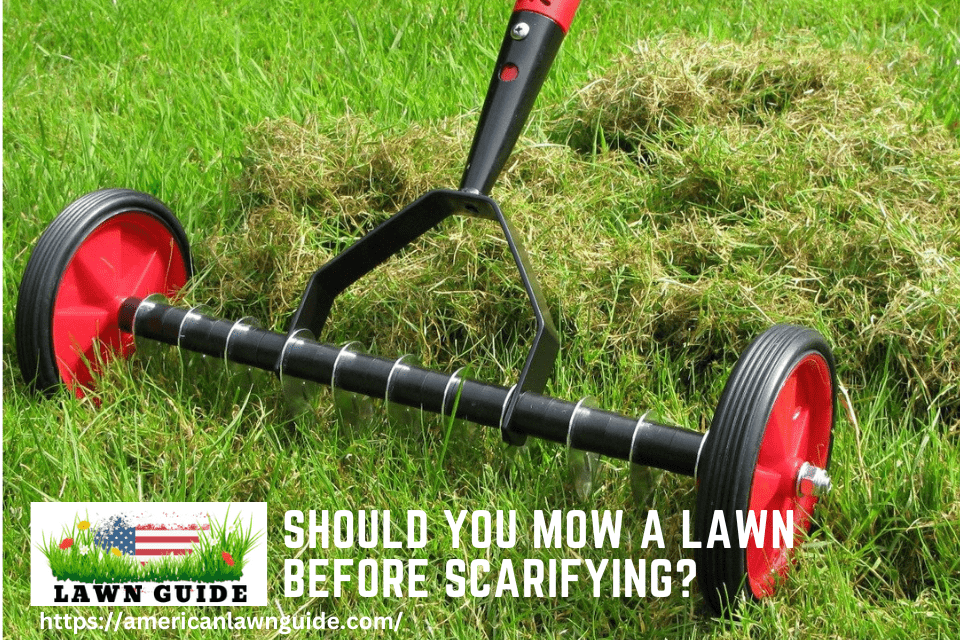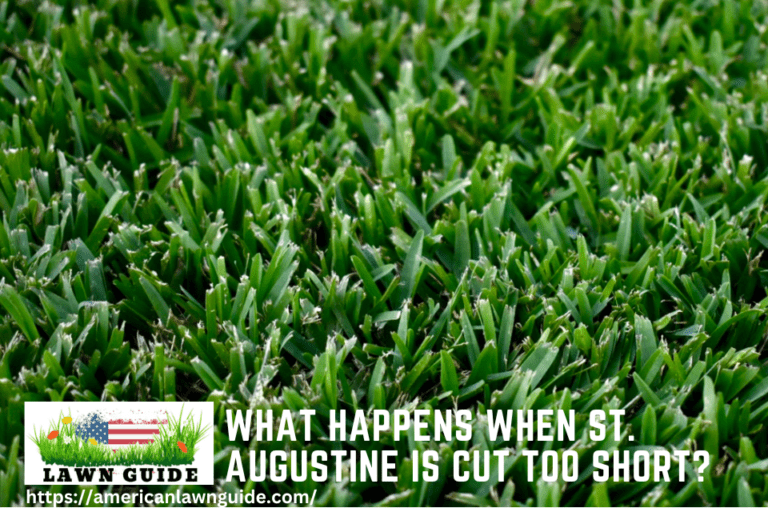No, you should not mow a lawn before scarifying. Scarifying is a process of removing dead grass and thatch from the lawn, and it is best done when the grass is dry. Mowing the lawn before scarifying will make the process more difficult and could damage the lawn.
The answer to this question is a resounding yes! Mowing your lawn before scarifying will help ensure that the scarification process is as effective as possible. By mowing your lawn first, you’ll be able to remove any dead or excess growth that could potentially clog up the scarifier.
This will also allow you to get a better look at the condition of your lawn and identify any areas that may need extra attention. So, if you’re thinking about scarifying your lawn, make sure to do it after you’ve mown it first!
Do you need to mow before scarifying?
How often should I mow?
The answer to this question depends on a few factors:
Your lawn’s size – if you have a small garden, then it’s best to mow as frequently as possible to keep on top of thatch build up. However, larger areas of turf may not need to be mowed as frequently.
Type of grass – fast-growing varieties such as ryegrass will benefit from frequent mowing, whereas slower-growing grasses such as fescue may not require it as regularly.
Time of year – lawns tend to be at their most active in the spring and summer months, so they will likely need mowing around once a week. As the weather gets colder and the days get shorter, less mowing will be required.
When should I start scarifying?
Scarifying should be done at least once a year, preferably in autumn or spring. Scarification helps you get rid of the dead grass and unwanted weeds that have built up on your lawn over time. It also prepares your soil for the upcoming season so you can start growing new plants faster.
Should grass be dry before scarifying?
It is best to scarify on a warm, dry day so that the cut blades of grass can absorb more sunlight and dry easily. If the turf is wet, this will slow down recovery time, meaning your lawn takes longer to restore itself – something you don’t want during early Springtime!
Do You Scarify before Or After Cutting?
If you’re looking to improve the drainage and aeration in your lawn, scarifying is a great option. But when is the best time to do it? The answer may surprise you.
Most people assume that scarifying should be done in the fall, after the leaves have fallen and before the ground freezes. However, fall is actually not the ideal time for scarifying. Why?
Because grass grows more slowly in cooler temperatures, which means it will take longer for your lawn to recover from the process. So when is the best time to scarify? The answer is actually spring!
Grass grows more quickly in warmer temperatures, so scarifying in spring will help your lawn recover faster. Plus, aerating and overseeding are typically done in late summer or early fall, so doing them before you Scarify will help ensure that they are effective.
What is the Best Time to Scarify a Lawn?
The best time to scarify a lawn is in the fall. This is because the weather is cooler and the grass is dormant, so it can recover more easily from the scarification process. It’s also a good idea to do it in the spring, before the growing season begins.
Is It Best to Scarify When Wet Or Dry?
There is no one definitive answer to this question as it depends on a number of factors, such as the type of grass and soil you have, the time of year, and your personal preference. That said, here are some general guidelines to help you decide whether to scarify when wet or dry. If you have fine turf grass, like bent grass or putting green-type grasses, it’s generally best to scarify when the ground is dry.
These types of grasses are more susceptible to injury from compaction, so scarifying when the ground is softer can cause more damage. On the other hand, if you have coarser turf grasses like bluegrass or fescue, it’s usually best to scarify when the ground is wet. These grasses are less likely to be damaged by compaction, so they can better withstand the stress of being Scarified while wet.
Ultimately, the best way to decide whether to scarify when wet or dry is to experiment and see what works best for your particular lawn.
What is the Best Way to Scarify My Lawn?
The best way to scarify your lawn is to use a mechanical scarifier. This type of scarifier has rotating blades that cut through the thatch and grass, making it easy to remove. You can also use a chemical scarifier, which uses chemicals to break down the thatch.

How Short to Cut Grass before Scarifying?
If you’re wondering how short to cut your grass before scarifying, the answer is “it depends”. The general rule of thumb is to lower your mowing height by one-third, but this may vary depending on the type of grass you have and the time of year. For example, if you have a cool-season grass like Kentucky bluegrass, you’ll want to wait until late fall or early winter to scarify.
If you have a warm-season grass like bermudagrass, it’s best to do it in early spring or late summer. Of course, there are exceptions to every rule. If your lawn is particularly overgrown or has a lot of thatch built up, you may need to scarify at a lower mowing height than usual.
Conversely, if your lawn is in good shape with minimal thatch accumulation, you can probably get away with scarifying at a higher mowing height. As always, be sure to test a small area before scarifying your entire lawn. This will help you gauge how much thatch removal is necessary and avoid any potential damage to your turf grass.
No Grass Left After Scarifying
If you’ve ever had your lawn scarified, you know that it’s a pretty intense process. The machine basically tears up all of the grass in your lawn so that new growth can come in. It’s a great way to rejuvenate a lawn that has been neglected, but it does leave the yard looking pretty bare.
If you’re planning on having your lawn scarified, make sure to do it at the right time of year. Fall is the best time to do it because the grass will have time to regrow before winter sets in. Spring is also a good time to do it, but you may have some bare patches in your lawn until the new growth comes in.
After your lawn has been scarified, be sure to fertilize and water regularly so that the new grass can grow in thick and healthy.
Can scarifying ruin your lawn?
Yes, however with good care and attention you could recover quickly! Just make sure to follow our tips above for successfully scarifying without ruining your lawn altogether. · Don’t remove too much soil when scrapping back dead material; it will erode away instead. This is especially true if you’re using a powered tool (such as an electric rake).
How to Revive a Lawn After Scarifying?
If your lawn is looking a little worse for wear, it may be time to give it some TLC in the form of scarifying. Scarifying involves using a special machine or rake to remove dead grass, moss and other debris from the lawn so that new growth can occur. This process can be done by professionals or you can do it yourself with the right tools.
When should you scarify your lawn? The best time to scarify your lawn is in late summer or early fall when the weather is cooler and the grass is still growing. This will give the new grass seeds a chance to germinate and take hold before winter sets in.
If you live in an area with warm winters, you can also scarify in late winter or early spring. How often should you scarify your lawn? You should only need to scarify your lawn every few years, depending on how much foot traffic it gets and how well it’s maintained.
A good rule of thumb is to scarify once every two to three years if you have light foot traffic and four to five years if you have heavy foot traffic. If you notice that moss or weeds are starting to take over, then it’s probably time for another round of scarifying.
Conclusion
It’s generally a good idea to mow your lawn before scarifying it. This will help ensure that the scarifier can do its job properly and remove all the thatch and moss from your lawn. It’s also a good idea to rake up any leaves or other debris before scarifying, as this can clog the scarifier and make it less effective.




